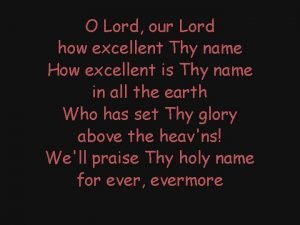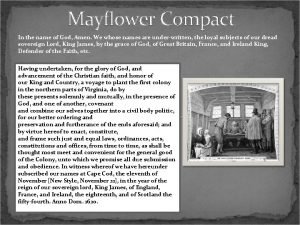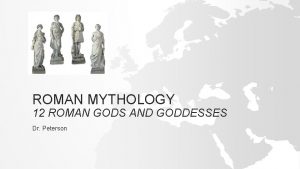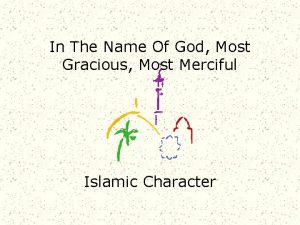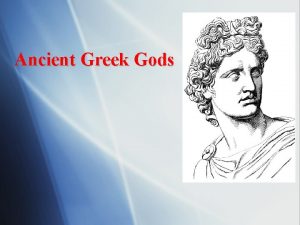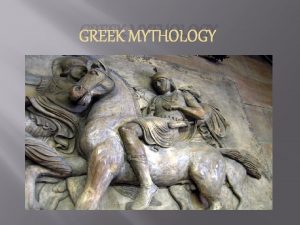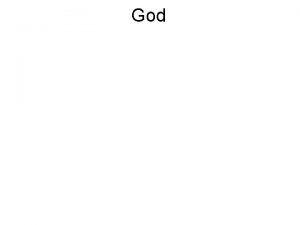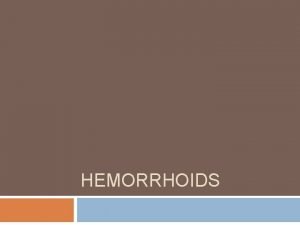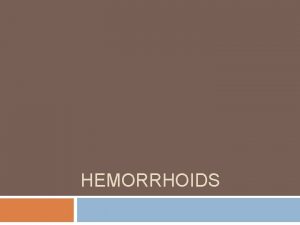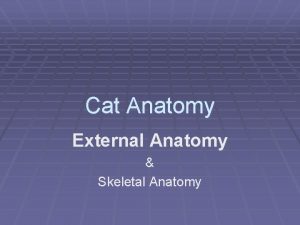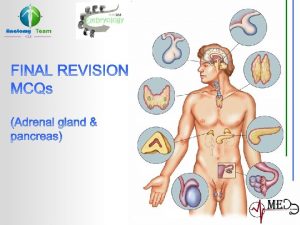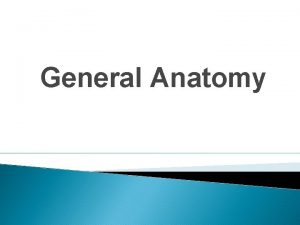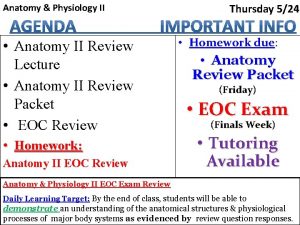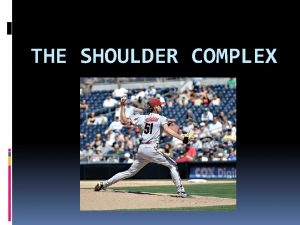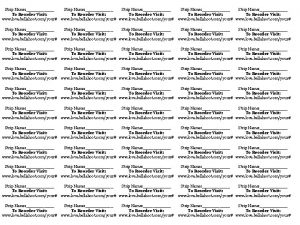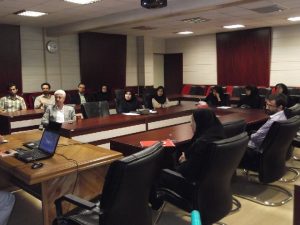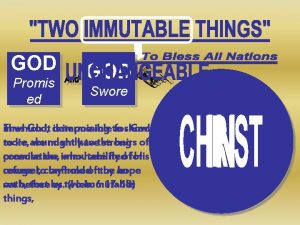IN THE NAME OF GOD ANATOMY OF THE











































- Slides: 43

IN THE NAME OF GOD

ANATOMY OF THE EXTRAOCULAR MUSCLES MOHAMMAD REZA AKHLAGHI

EXTRAOCULAR MUSCLES There are 7 extraocular muscles: � 4 rectus muscles, � 2 oblique muscles � levator palpebrae superioris muscle.

EXTRAOCULAR MUSCLES

INNERVATION Cranial nerve VI (abducens) innervates the lateral rectus muscle cranial nerve IV (trochlear) innervates the superior oblique muscle cranial nerve III has an upper and a lower division: innervates the levator palpebrae, superior rectus, medial rectus, inferior rectus, and inferior oblique muscles.

EYE POSITION & MUSCLE ACTIONS primary position The primary action is the major effect of a muscle, when the muscle contracts while the eye is in primary position. The secondary and tertiary actions: of a muscle are the additional effects on the position of the eye in primary position

RANGE OF ACTION � The globe usually can be moved about 50° in each direction from primary position. � Under normal viewing circumstances, the eyes move only about 15°-20° from primary position before head movement

ANNULUS OF ZINN A cone-shaped structure, behind the eyeball, composed of five extraocular muscles (medial rectus, lateral rectus, superior rectus, inferior rectus, and superior oblique), within which runs the optic nerve (cranial nerve II), the ophthalmic artery, and the ophthalmic vein


EXTRAOCULAR MUSCLES

MEDIAL RECTUS � Origin: annulus of zinn � Insertion: medially, in hori meri, 5. 5 mm from limbus � Length: 40 mm L, 10 mm W, 4 mm T � Direction: 90 o � Innervation: lower CN III � Blood supply: Inf. Mus. Branch Of Oph. A. � Action: addu

MEDIAL RECTUS

LATERAL RECTUS � Origin: annulus of zinn � Insertion: laterally, in horizontal meridian, 6. 9 mm from limbus � Length: 40 mm L, 9 mm W, 8 mm T � Direction: 90 o � Innervation: CN VI � Blood supply: Inf. Mus. Branch Of Oph. A. � Action: abd

LATERAL RECTUS

INFERIOR RECTUS Origin: annulus of zinn Insertion: inferiorly, in ver. Mer. 6. 5 mm from limbus Length: 40 mm L, 10 mm W, 5. 5 mm T Direction: 23 o Innervation: lower CN III Action: Dep. Ext, Add,

INFERIOR RECTUS

SUPERIOR RECTUS Origin: annulus of zinn Insertion: superiorly, in ver. Mer. 7. 7 mm from limbus Length: 40 mm L, 10 mm W, 5. 5 mm T Direction: 23 o Innervation: upper CN III Action: Dep. Ext, Add,

SUPERIOR RECTUS

SUPERIOR OBLIQUE Origin: superior of annulus of zinn (func. At trochlea Insertion: post. to equator in suprotemp. Length: 32 mm L, 6 mm W, 25 mm T Direction: 51 o Innervation: CN IV Action: Int, Dep, Abd,

SUPERIOR OBLIQUE

INFERIOR OBLIQUE Origin: behind of lacrimal fossa Insertion: post. to equator in macular area. Length: 37 mm L, 10 mm W, 1 mm T Direction: 51 o Innervation: lower CN III Action: Ext, Elev, Abd,

INFERIOR OBLIQUE

LEVATOR PALPEBRAE SUPERIORIS Origin: above of annulus of zinn Insertion: above and anterior surface of tarsus. Innervation: upper CN III Action: eyelid elevation

ADDUCTOR MUSCLES

ABDUCTORS

ELEVATORS

DEPRESORS

INTERNAL ROTATORS

EXTERNAL ROTATORS

INSERTION RELATIONSHIPS OF THE RECTUS MUSCLES Spiral of Tillaux

MUSCLE CONE The muscle cone lies posterior to the equator. It consists of the extraocular muscles, the extraocular muscle sheaths, and the intermuscular membrane. The muscle cone extends posteriorly to the annulus of Zinn at the orbital apex

TENON'S CAPSULE Is the bulk of the orbital fascial system Forms the envelope within which the eyeball moves Fuses posteriorly with the optic nerve sheath and anteriorly with the intermuscular septum Posterior portion is thin and flexible Posterior to the equator, it is thick and tough, suspending the globe to the periorbital tissues



INTERMUSCULAR SEPTUM �a membrane that spans between rectus muscles and fuses with the conjunctiva 3 mm posterior to the limbus. � Posterior to the globe, it separates the intraconal fat pads from the extraconal fat pads. � Numerous extensions from all the extraocular muscle sheaths attach to the orbit and help support the globe.

ANATOMICAL CONSIDERATIONS DURING SURGERY Damaging of nerves during anterior surgery An instrument thrust more than 26 mm posterior to the rectus muscle's insertion may cause injury to the nerve. The nerve supplying the inferior oblique muscle enters the lateral portion of the muscle, where it crosses the inferior rectus muscle; the nerve can be damaged by surgery in this area. Cranial nerve IV would not be affected by a retrobulbar block.

CONT. The intermuscular septum connections, especially between rectus muscles and oblique muscles, can help locate a lost muscle during surgery. Extensive intermuscular septum dissections are not necessary for rectus recession surgery. During resection surgery, the intermuscular septum connections should be severed

The blood supply to the extraocular muscles provides almost all of the temporal half of the anterior segment circulation and the majority of the nasal half of the anterior segment circulation. Therefore, simultaneous surgery on 3 rectus muscles may induce anterior segment ischemia, particularly in older patients.

The inferior rectus muscle is distinctly bound to the lower eyelid by the fascial extension from its sheath


The sclera is thinnest just posterior to the 4 rectus muscle insertions. This area is the site for most muscle surgery, especially for recession procedures. Therefore, scleral perforation is always a risk during eye muscle surgery.


 Name all the rays
Name all the rays Our god is an awesome god vine
Our god is an awesome god vine My god is an awesome god he reigns
My god is an awesome god he reigns Awesome god medley
Awesome god medley God is good god is great speed
God is good god is great speed O god you are my god earnestly i seek you
O god you are my god earnestly i seek you God-given virtues that direct us to our loving, triune god.
God-given virtues that direct us to our loving, triune god. Justice new testament
Justice new testament My god's bigger than your god
My god's bigger than your god Using god's name in vain meaning
Using god's name in vain meaning God's covenant
God's covenant Oh lord how excellent is thy name
Oh lord how excellent is thy name In the name of god amen
In the name of god amen In the name of god most gracious most merciful
In the name of god most gracious most merciful 馮定華
馮定華 Roman name jupiter
Roman name jupiter Asymmetry
Asymmetry In the name of god the beneficent the merciful
In the name of god the beneficent the merciful In the name of god most gracious most merciful
In the name of god most gracious most merciful Hercules scar rug
Hercules scar rug Manifestation names
Manifestation names Name
Name God saves name
God saves name In the name of god most gracious prayer
In the name of god most gracious prayer In the name of god the merciful
In the name of god the merciful His name is the word of god
His name is the word of god Artemis realm and symbol
Artemis realm and symbol Hát kết hợp bộ gõ cơ thể
Hát kết hợp bộ gõ cơ thể Frameset trong html5
Frameset trong html5 Bổ thể
Bổ thể Tỉ lệ cơ thể trẻ em
Tỉ lệ cơ thể trẻ em Gấu đi như thế nào
Gấu đi như thế nào Tư thế worms-breton
Tư thế worms-breton Alleluia hat len nguoi oi
Alleluia hat len nguoi oi Môn thể thao bắt đầu bằng từ chạy
Môn thể thao bắt đầu bằng từ chạy Thế nào là hệ số cao nhất
Thế nào là hệ số cao nhất Các châu lục và đại dương trên thế giới
Các châu lục và đại dương trên thế giới Cong thức tính động năng
Cong thức tính động năng Trời xanh đây là của chúng ta thể thơ
Trời xanh đây là của chúng ta thể thơ Cách giải mật thư tọa độ
Cách giải mật thư tọa độ Phép trừ bù
Phép trừ bù Phản ứng thế ankan
Phản ứng thế ankan Các châu lục và đại dương trên thế giới
Các châu lục và đại dương trên thế giới Thơ thất ngôn tứ tuyệt đường luật
Thơ thất ngôn tứ tuyệt đường luật











